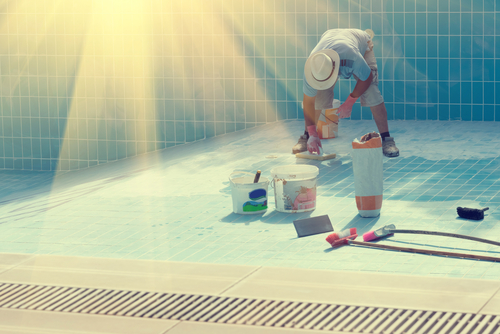Swimming pools offer amazing value. They look lovely, they’re used for both relaxation and exercise, and having one greatly boosts your property’s value. However, since they’re a structural feature, they require proper and regular maintenance that will preserve their appeal and durability.
Without it, stains and cracks may appear on the pool’s surface. Professionally-done swimming pool resurfacing is the process of fixing these problems and restoring the pool to its original condition. As it’s a complicated procedure, San Diego pool resurfacing should always be performed by certified experts.
But wait, how do you know if your pool needs resurfacing? How often do you have to resurface a pool, anyway? Also, what pool resurfacing options are available? Read on to learn the answers to some of these common pool resurfacing questions.
What does pool resurfacing mean?
Water gradually dissolves almost anything it comes in contact with. In case of tough materials such as stone and concrete, this process can take decades or even centuries, but eventually water damage will cause the material to crumble.

When this occurs in a pool, its surface will begin to crack, peel, chip, erode, or become stained. Aside from affecting the appeal of your pool, this can also cause leaks, and introduce dirt and bacteria into the water.
Pool resurfacing renews the pool by removing the old surface material and applying a brand new one. Aside from preventing further leaks or other problems, this is also a fantastic opportunity to give your pool a complete new look by choosing a different color or surfacing material.
When should you turn to pool resurfacing San Diego professionals?
There are many different signs that indicate your pool needs to be resurfaced. The good news is, the majority of these signs are visible with the naked eye and can be diagnosed without the use of specialized equipment.
Five most common signs that a pool should be resurfaced are:
- Unexplained water level drops almost certainly indicate there’s a leak somewhere.
- Popped or corroded tiles can be caused by tile grout that hasn’t been treated correctly.
- Erosion manifests in the form of visibly worn spots on the pool’s surface.
- Rough spots on the swimming pool floor occur as a direct result of surface wear. They can also appear due to subpar pool installation, chemical imbalance, and physical damage.
- Pool stains occur as a result of debris lying on the bottom of the pool for too long, the presence of metals in the water, or chemical imbalances.
Should you resurface your pool on your own?
Unless you have a background in construction or you’ve worked in pool resurfacing before, refrain from doing it yourself. Pool resurfacing is a complex procedure that requires the coordination of multiple trained technicians.

Even if you have the know-how, you probably lack the necessary equipment and materials. At best, you’ll do a shoddy resurfacing job that doesn’t comply with relevant safety standards, and at worst you’ll cause additional (and expensive) damage to your pool.
Where can I get dependable San Diego pool resurfacing?
Whether you have a small above-ground pool intended for relaxation or a hefty unit that rivals the Tierrasanta Pool in size, it’ll eventually need to be resurfaced. When that day comes, your best friend will be So Cal Custom Pools & Spas.
As a top supplier of state-of-the-art spas and swimming pools in San Diego, we are uniquely positioned to attend to all your pool-related needs. We’re especially known for the quality of our pool resurfacing services that can make even an old pool look completely new.
Give us a call today and schedule our services. We can’t wait to give you and your loved ones the gift of a phenomenal swimming pool.



 5-Star Pool Builder
5-Star Pool Builder
 5-Star Rating on Facebook
5-Star Rating on Facebook
 We are on Angie's List
We are on Angie's List




